The Green Tea “Riga”
The 1956′ Chengdu class can be summup as the Chinese “Riga” class. The latter were the standards mass-built Soviet ASW frigates of the Soviet Navy. Although they were delivered at the same time than the four Gnevny (future Type 07 Anshan class destroyers), these frigates arrived from the Soviet big brother shipyards in “kit”, for local assembly. They were hardly equivalent to licence-built ships, based solely on blueprints. Anyway, these ships became the Type 01 Chengdu-class and made the bulk of the very small Chinese PLAN until the arrival of the Luda. In between other frigates will enter service, the Jiangnan class in 1967-69 and the Yintang class in 1973, the two being developments of the Riga hull. Even the later Jianghu mass-production class which spanned 1975-1993 were developments of the same original hull which basically endured the whole cold war for the Chinese the same way PLA’s Type 59 MBTs were declined into the Type 69/79 and 88 MBTs.
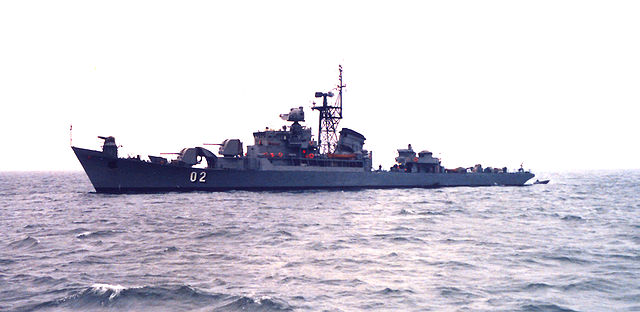
Finnish Hameenmaa, a mineleyer-converted Riga-Class in 1982, giving some idea of the Type 065.
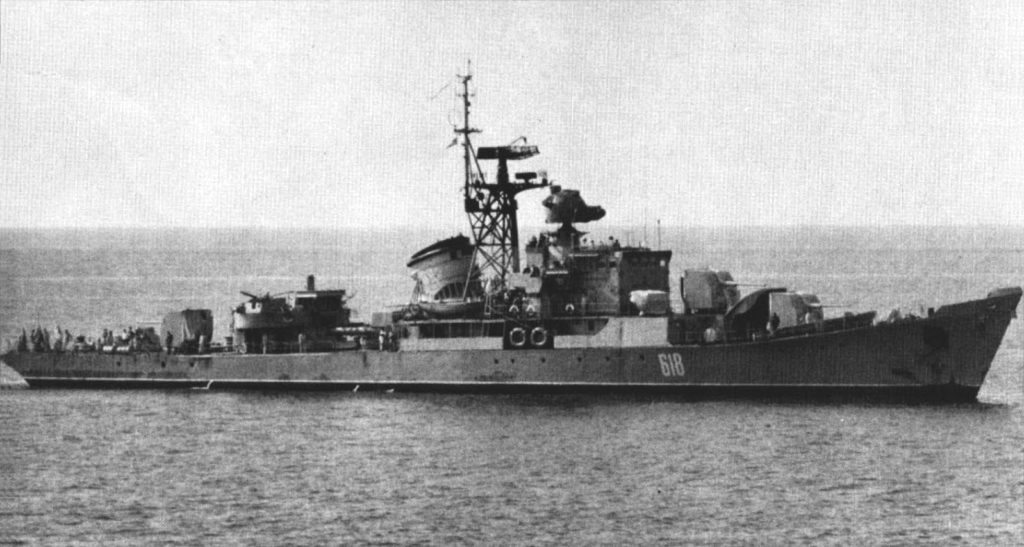
Another Riga class, SKR-61 underway in 1970. Actual photos of the type 065 are really hard to find.
About the “Riga” class
As a foreworld, the Soviet “Riga” class (a NATO designation) was known in USSR as Storozhevoi Korabl (escort ship) Project 50 Gornostay (Ermine stoat). They were basically Soviet reinterpretation in the 1950s of the classic escort destroyers of WW2. The design was simple, rugged and sound, and as customary was produced from 1953 to 1959 to an extent of 69 vessels. It made perfectly sense to distribute these to Warsaw pact nations like East Germany, Bulgaria, Finland and a faithful Asian customer such as Indonesia. There was nothing revolutionary about these ships, which primary armament counted rapid-fire dual purpose guns 100 mm completed by AA an array of 57 and 37mm mounts, while ASW was limited to depth charges and two or three 533 mm torpedo tubes, some ships having a set of MBU 600 anti-submarine rocket launchers later replaced by two RBU 2500. They were easy to recoignise with their fluch deck, pointed prow and central superstructure, including the funnel. Speed, given the nature of submarines at that time, was not paramount, with just 28 knots (52 km/h; 32 mph), but range was, and these surprisingly NOT diesel-powered ships had a comfortable 1,950 nmi (3,610 km; 2,240 mi) range at 14 kn (26 km/h; 16 mph). In Soviet service the Riga were discarded in 1980s, whereas the Chinese Chengdu soldiered on for another decade.

Picture from E-Bay – model kit
Specifics of the Chengdu class
In their new denomination they became the Type 6601 (Chengdu class) these kits were assembled by the Huangpu Shipyard in Guangzhou, and Hudong Shipyard in Shanghai from 1955 to 1958. But soon problems appeared, to start with finding an appropriate power source for these frigates. The Riga class had a TV9 steam turbine the Chinese were incapable of replicating, and at the same time this was a fuel-hungry unit they found unsuitable for their needs. Therefore rather than to start again from the TB-8 and TB-9 models China was currently cloning (with some difficulties), engineers choosed the simpler and proven 37D diesel 9ED743/76 available at that time and already manufactured locally for the Chinese “Whiskey” class submarines. However this power unit was incapable of doing reverse speed, but the 37DR diesel was. The 37D also had a rather low power rate, end performances risked to be weaker than the original Riga. Eventualy the 9EDZ43/76 was chosen for the Type 065. Later on, cloning the 37DR engine proved impossible. To house the massive 9EDZ43/76 PLAN engineers had to split-level the deck for 3/4 of the length. Other improvements concerned the propellers, and tests shows the new vessels were able to reach 21.5 knots.
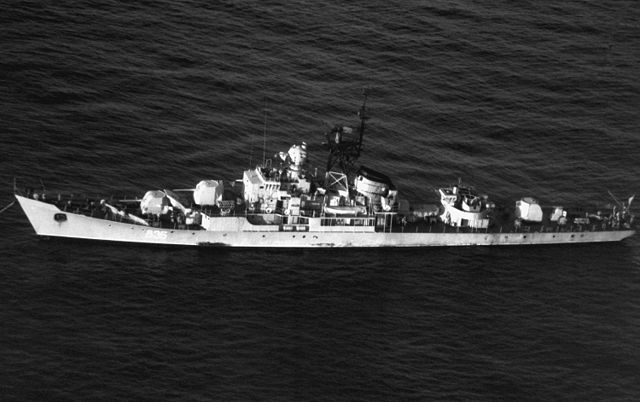
Aerial view of the Riga class, giving some idea of the Chengdu initial design
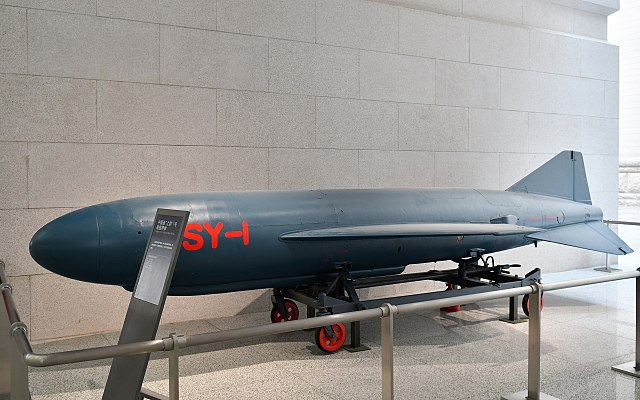
SY-1 antiship missile
Type 01 (Chengdu class)
By the early 1970s, Type 6601 class went through mid-life upgrade with their torpedo tubes replaced by a twin launcher for SY-1 anti-ship missiles. Although redesignated as Type 01, these ships were still called Chengdu class. They were retired in the 1980s.
About the SY-1 missiles:
These were Chinese copies of the Soviet P-15 Termit antiship missile, produced at Factory 320 (Nanchang Aircraft Factory) and designed by Li Tongli and Lu Lin. The Chinese SY-1 missiles replaced the original, unreliable aneroid altimeter of P-15 Termit by a new radar altimeter. The SY-1A, had an even better mono-pulse terminal guidance radar seeker. It was codenamed NATO CSS-N-1 Scrubbrush.
Specifications: 6.55 x 0.76 x 2.4 m (wingspan), Weight 2,095 kg with a 513 kg shaped charge high explosive warhead. It was propelled by a liquid rocket engine coupled to a solid rocket booster and reached Mach 0.8 with a range of 150 km at low altitude, beyond 20 meters. Guidance comprise Inertial and active conical scanning terminal guidance radar, later active monopulse radar. It had a single-shot kill probability of 70%.

Impression of the Type 065 Frigate (Conways)

Impression of the following Jiangnan class Frigate (Conways)
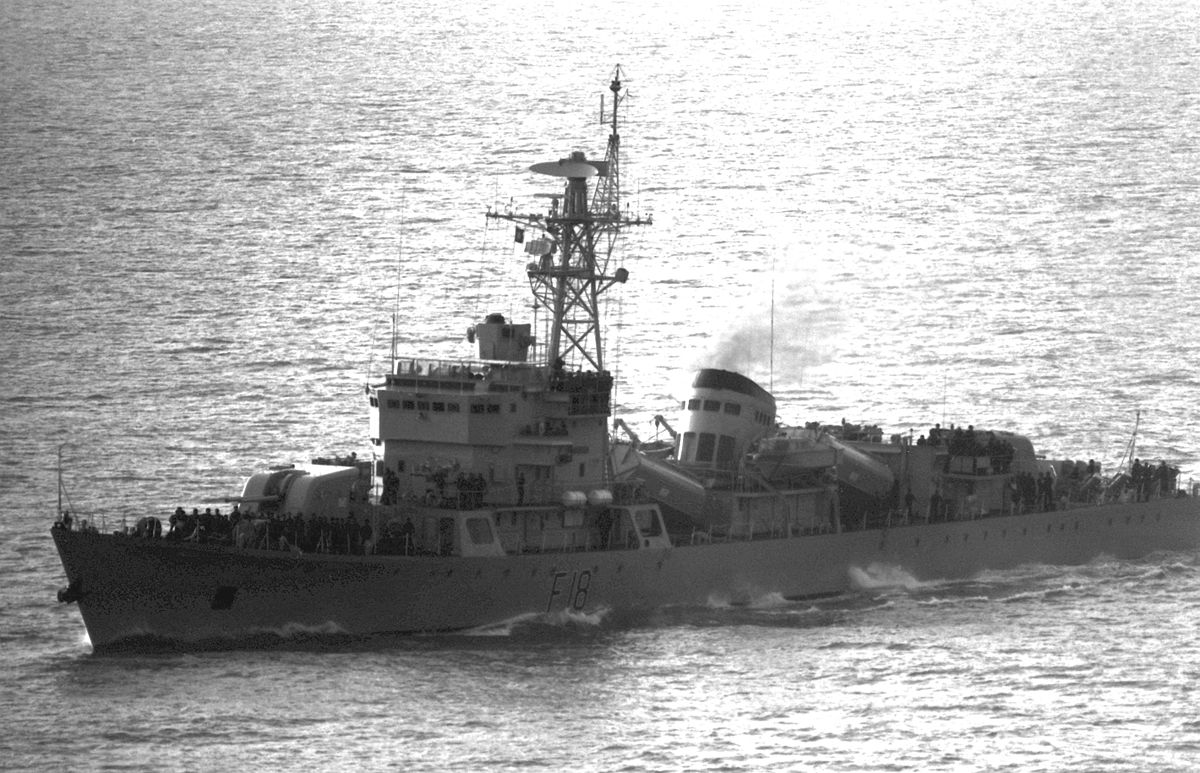
The successor Type 053H surface-warfare frigate.
Read More
The Dragon’s Teeth: The Chinese People’s Liberation Army—Its History By Benjamin Lai
https://en.wikipedia.org/wiki/Type_053_frigate#Versions
Conways’ all the world fighting ships 1947-1995
https://web.archive.org/web/20111005020054/http://www.atrinaflot.narod.ru/2_mainclassships/06_skr_50/0_50.htm


 Latest Facebook Entry -
Latest Facebook Entry -  X(Tweeter) Naval Encyclopedia's deck archive
X(Tweeter) Naval Encyclopedia's deck archive Instagram (@navalencyc)
Instagram (@navalencyc)





 French Navy
French Navy Royal Navy
Royal Navy Russian Navy
Russian Navy Armada Espanola
Armada Espanola Austrian Navy
Austrian Navy K.u.K. Kriegsmarine
K.u.K. Kriegsmarine Dansk Marine
Dansk Marine Nautiko Hellenon
Nautiko Hellenon Koninklije Marine 1870
Koninklije Marine 1870 Marinha do Brasil
Marinha do Brasil Osmanlı Donanması
Osmanlı Donanması Marina Do Peru
Marina Do Peru Marinha do Portugal
Marinha do Portugal Regia Marina 1870
Regia Marina 1870 Nihhon Kaigun 1870
Nihhon Kaigun 1870 Preußische Marine 1870
Preußische Marine 1870 Russkiy Flot 1870
Russkiy Flot 1870 Svenska marinen
Svenska marinen Søværnet
Søværnet Union Navy
Union Navy Confederate Navy
Confederate Navy Armada de Argentina
Armada de Argentina Imperial Chinese Navy
Imperial Chinese Navy Marinha do Portugal
Marinha do Portugal Mexico
Mexico Kaiserliche Marine
Kaiserliche Marine 1898 US Navy
1898 US Navy Sovietskiy Flot
Sovietskiy Flot Royal Canadian Navy
Royal Canadian Navy Royal Australian Navy
Royal Australian Navy RNZN Fleet
RNZN Fleet Chinese Navy 1937
Chinese Navy 1937 Kriegsmarine
Kriegsmarine Chilean Navy
Chilean Navy Danish Navy
Danish Navy Finnish Navy
Finnish Navy Hellenic Navy
Hellenic Navy Polish Navy
Polish Navy Romanian Navy
Romanian Navy Turkish Navy
Turkish Navy Royal Yugoslav Navy
Royal Yugoslav Navy Royal Thai Navy
Royal Thai Navy Minor Navies
Minor Navies Albania
Albania Austria
Austria Belgium
Belgium Columbia
Columbia Costa Rica
Costa Rica Cuba
Cuba Czechoslovakia
Czechoslovakia Dominican Republic
Dominican Republic Haiti
Haiti Hungary
Hungary Honduras
Honduras Estonia
Estonia Iceland
Iceland Eire
Eire Equador
Equador Iran
Iran Iraq
Iraq Latvia
Latvia Liberia
Liberia Lithuania
Lithuania Mandchukuo
Mandchukuo Morocco
Morocco Nicaragua
Nicaragua Persia
Persia San Salvador
San Salvador Sarawak
Sarawak Uruguay
Uruguay Venezuela
Venezuela Zanzibar
Zanzibar Warsaw Pact Navies
Warsaw Pact Navies Bulgaria
Bulgaria Hungary
Hungary

 Bundesmarine
Bundesmarine Dutch Navy
Dutch Navy Hellenic Navy
Hellenic Navy Marina Militare
Marina Militare Yugoslav Navy
Yugoslav Navy Chinese Navy
Chinese Navy Indian Navy
Indian Navy Indonesian Navy
Indonesian Navy JMSDF
JMSDF North Korean Navy
North Korean Navy Pakistani Navy
Pakistani Navy Philippines Navy
Philippines Navy ROKN
ROKN Rep. of Singapore Navy
Rep. of Singapore Navy Taiwanese Navy
Taiwanese Navy IDF Navy
IDF Navy Saudi Navy
Saudi Navy Royal New Zealand Navy
Royal New Zealand Navy Egyptian Navy
Egyptian Navy South African Navy
South African Navy






























 Ukrainian Navy
Ukrainian Navy dbodesign
dbodesign
My grandfather was a gunner for the 100mm Naval Gun on the Guiyang (508).
Sorry, I meant he was the gunner for the 37mm Anti Aircraft Gun on the Guiyang (508)
Thanks for this point, Jeremy !